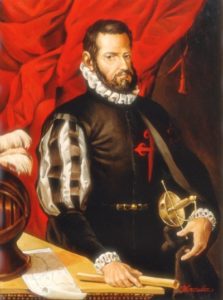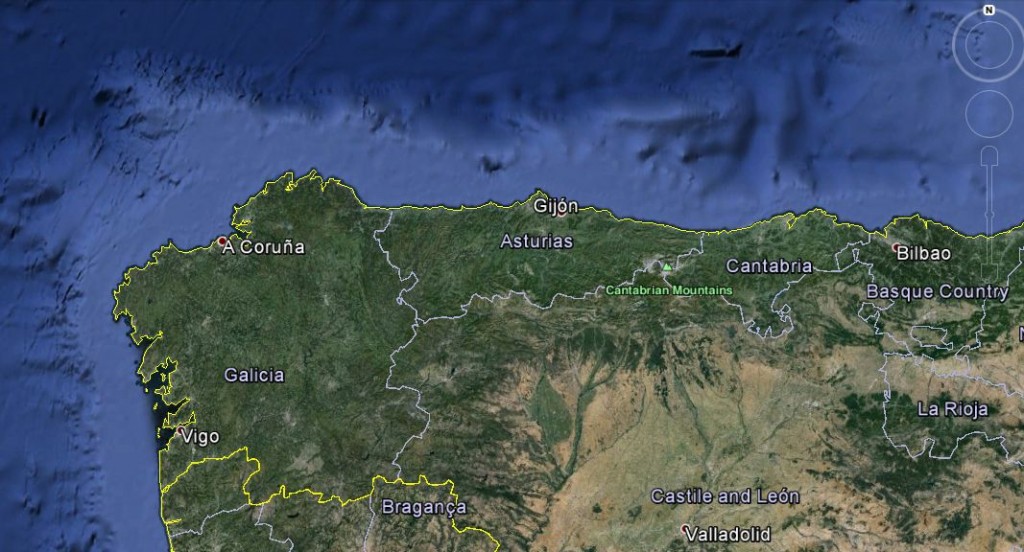Click here to read the first installation of this series on Pedro Menéndez de Avilés.
 When writing about an historical character, it is important to discuss the sources one uses. When writing about Juan Ponce de León’s 1513 voyage of discovery to Florida, the Spanish historian Antonio de Herrera was of critical importance since his writings about the 1513 voyage were the only ones known to have been written using primary source documentation kept by Ponce de León and his pilots during that voyage. In the case of Pedro Menéndez de Avilés, who founded St. Augustine in 1565, there are extensive documents and letters kept in Spanish archives that deal directly with his Enterprise of Florida but his early life is a little more obscure.
When writing about an historical character, it is important to discuss the sources one uses. When writing about Juan Ponce de León’s 1513 voyage of discovery to Florida, the Spanish historian Antonio de Herrera was of critical importance since his writings about the 1513 voyage were the only ones known to have been written using primary source documentation kept by Ponce de León and his pilots during that voyage. In the case of Pedro Menéndez de Avilés, who founded St. Augustine in 1565, there are extensive documents and letters kept in Spanish archives that deal directly with his Enterprise of Florida but his early life is a little more obscure.
We are fortunate the accomplishments of Pedro Menéndez were of such note that a number of writers documented his life and deeds in the 16th century when his accomplishments were recent. His childhood is discussed by two writers, Bartolomé Barrientos, a professor of Latin at the University of Salamanca, who wrote a biography of Menéndez in 1568; and a “Memorial” of Menéndez written by Solís de Merás, his brother-in-law and companion in the Enterprise of Florida, which ends abruptly in 1567.
These two accounts both closely describe some of the defining events in Pedro Menéndez’ childhood. Pedro Menéndez was born into a large family of 20 brothers and sisters. We are told by Barrientos that as a young boy Menéndez was usually one of the chosen leaders in neighborhood games and quarrels. His father died when he was young and the family estate was divided equally amongst all 20 so that none were left wealthy. His mother remarried and when the 8-year-old Pedro Menéndez was sent to be raised by foster parents, he ran away to the city of Valladolid in northern Spain. He was there for six months until fetched home and engaged to Ana María de Solís who was 10 years old at the time. It was hoped the engagement would keep him from wandering off again.
Solís de Merás tells us Menéndez applied himself to being a soldier on land and sea with his brothers and once on that path never deviated from it. He learned the way of the sea with his brothers including his elder brother Álvaro Sánchez de Avilés on whom he would continue to depend for support in sea ventures up to the time of the Enterprise of Florida. After learning the “ropes” from his brothers (the term originates with deckhands learning how to handle the ropes of a ship), Barrientos wrote, the still-young Menéndez became the captain of a privateering venture in a small vessel, with about 20 men under his command. While at sea they ran into a larger and more heavily armed French corsair. This was during a time of war between France and Spain though French corsairs were never really deterred during times of peace. This French and Spanish conflict provided the political backdrop to Pedro Menéndez’ entire life and career.
Map of northern Spain showing the province of Galicia on the north west corner of Spain and Menéndez’ natal province of Asturias on the north coast on the Bay of Biscay.
Outgunned by the larger French corsair, Menéndez’ men were prepared to surrender but were rallied by their captain. Even though they were taking heavy cannon fire they never struck their flag and it was said when the French saw the leadership exhibited by Menéndez they chose not to attempt to board and capture his vessel. Menéndez got the ship safely back to port in Galicia.
We do not know how many men Menéndez lost or if he was himself injured though this is likely given the nature of artillery and the quantities of wooden splinters sent flying about ship during a cannonade at sea. It’s also likely his privateering venture lost money unless it made captures previous to its engagement with the French corsair, which were not mentioned by our Spanish writers. The valor exhibited by Pedro Menéndez in this first documented action was a foreshadowing of the competence, bravery and determination that would make the first successful, permanent Spanish settlement of Florida possible.
Dr. Sam Turner is the Director of Archaeology at the St. Augustine Lighthouse & Museum. He has been part of the Lighthouse Archaeological Maritime Program (LAMP) since 2006.
This article was previously published in The St. Augustine Record.


